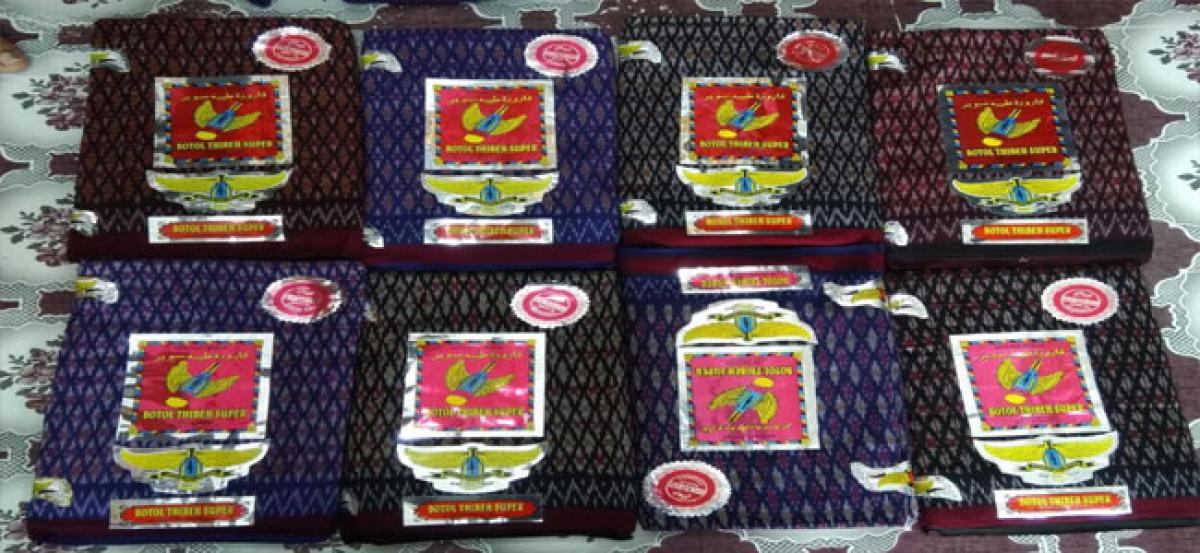Traditional lungi remains most visible in Barkas

The unwavering traditional clothing at Barkas, where conventional practice of wearing lungi still continues to reflect the ethos the Arab community, this practice marks the locality with most visible distinction of culture when compared to other parts of the Hyderaba
Barkas: The unwavering traditional clothing at Barkas, where conventional practice of wearing lungi still continues to reflect the ethos the Arab community, this practice marks the locality with most visible distinction of culture when compared to other parts of the Hyderabad.
Be it a family function, marriage or a festival, the men of Barkas continue to uphold the fashion of wearing lungi, mostly which are imported from Gulf countries like Dubai, Yemen, Oman or Far East, particularly Indonesia. Both young men and children appear in colourful lungis at any of the social gatherings, with pride and admiration towards each other.
Normally they wear lungis ranging from Rs 600 to Rs 1500, but during special occasions rather indulging in shopping like others by visiting market places or malls, they buy or order lungis ranging from Rs 8,000 to Rs 10,000 and sometimes above from local shops. Besides Lungis, Yemeni Taiban and Arab gowns (Jhubba) are also worn by men particularly during festivities. “Lungis are manufactured in Indonesia with both machine and handmade, the handmade is the premium quality and has higher price,” said Basravi brothers, running an outlet near Barkas grounds.
The brothers Saber Bin Mahmood Basravi and Ali Bin Mahmood Basravi, owners of Nishi selling lungis said that they started the business about 30 years back. Besides imported crockery, cosmetics, because of the demand for imported lungis they also started selling the clothing which continues to be lucrative in terms of business since then. An average Lungi is 2.5 meter long, amongst which a premium quality is made of 100 % cotton, which starts from Rs 3,500. “We have much expensive varieties, but general population does not afford to buy,” said Hasan Bin Saber Mahmood.
Some of the premium quality brands in demand are Garuroh Nahlah, Botal Tibah, Yemeni Taibans and some others and the Atlas brand continues to remains favorite amongst elderly men. These lungis come in different types and designs and colours and the most expensive colour in premium variety remains blue, as it is worn with combination of while coloured shirt considered to be modest. “Besides Barkas residents, several other customers from different parts of City visit this shop for buying this particular clothing,” added Basravi.
Another uniqueness of this clothing is the way these lungis are wrapped around. One has to stand right in the middle of the wide enough Lungi leaving the portion equally on both sides, then folding both sides towards other side and wrapping the top folds inside below the waist. In this way the design known as Hashiya appears on the backside of the lungi. The Taiban is also worn by these Arabs, but unlike lungi it remains few inches above the ankles. The normal length of the both lungi and taiban is from chest to toe for a normal heighted person.
To match this lungi, the residents of Barkas also wear headgear known as Mushajarah. The Qatari Mushajarah remains famous, which is made up of soft cotton with elegant embroidery work. Abdullah Kaseri, a resident of Barkas said that the traditionally wearing lungi is common in this part of City. “For daily purpose we wear a normal range lungis and in festivals and function premium quality lungis are worn,” he said.














